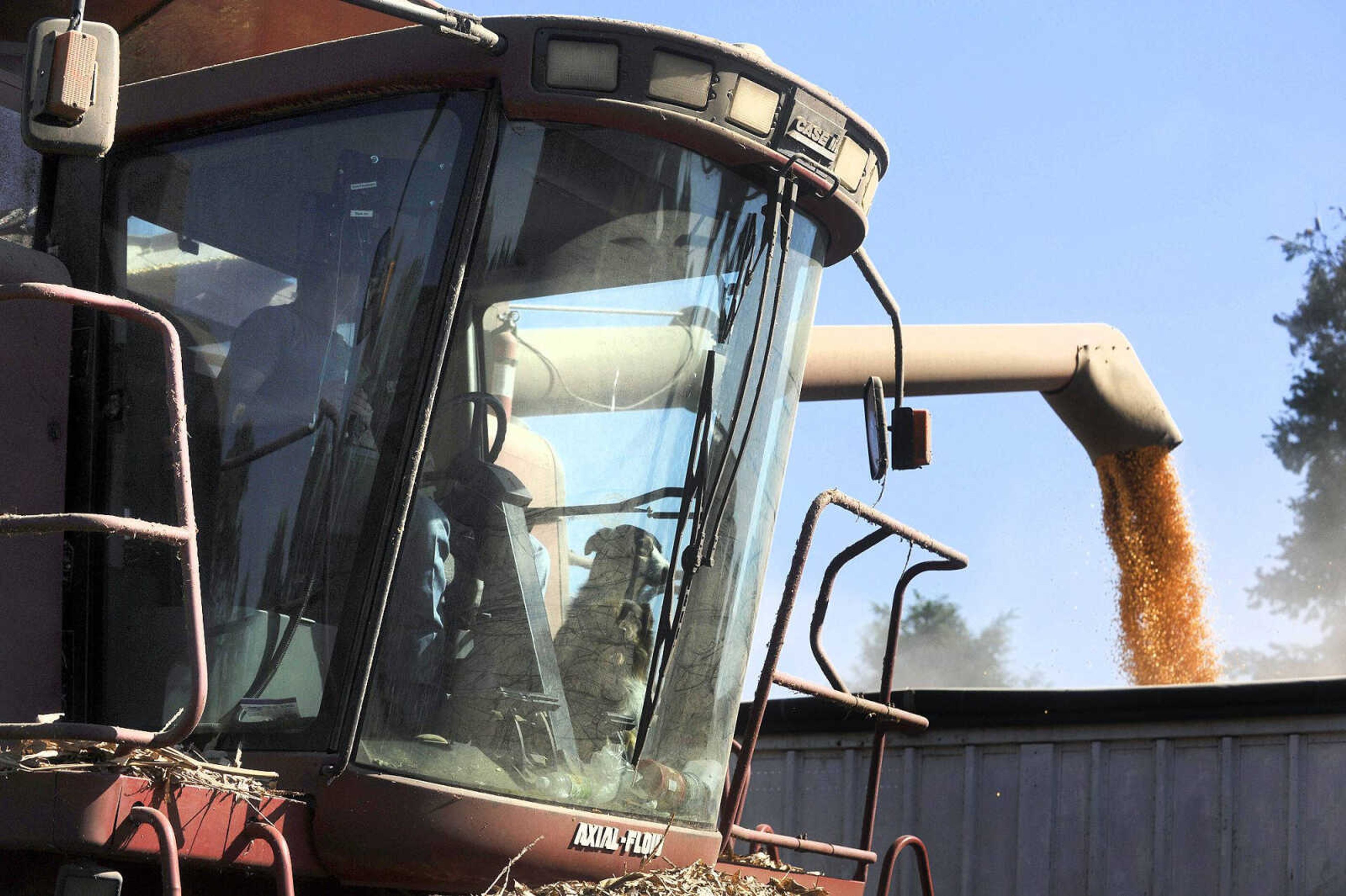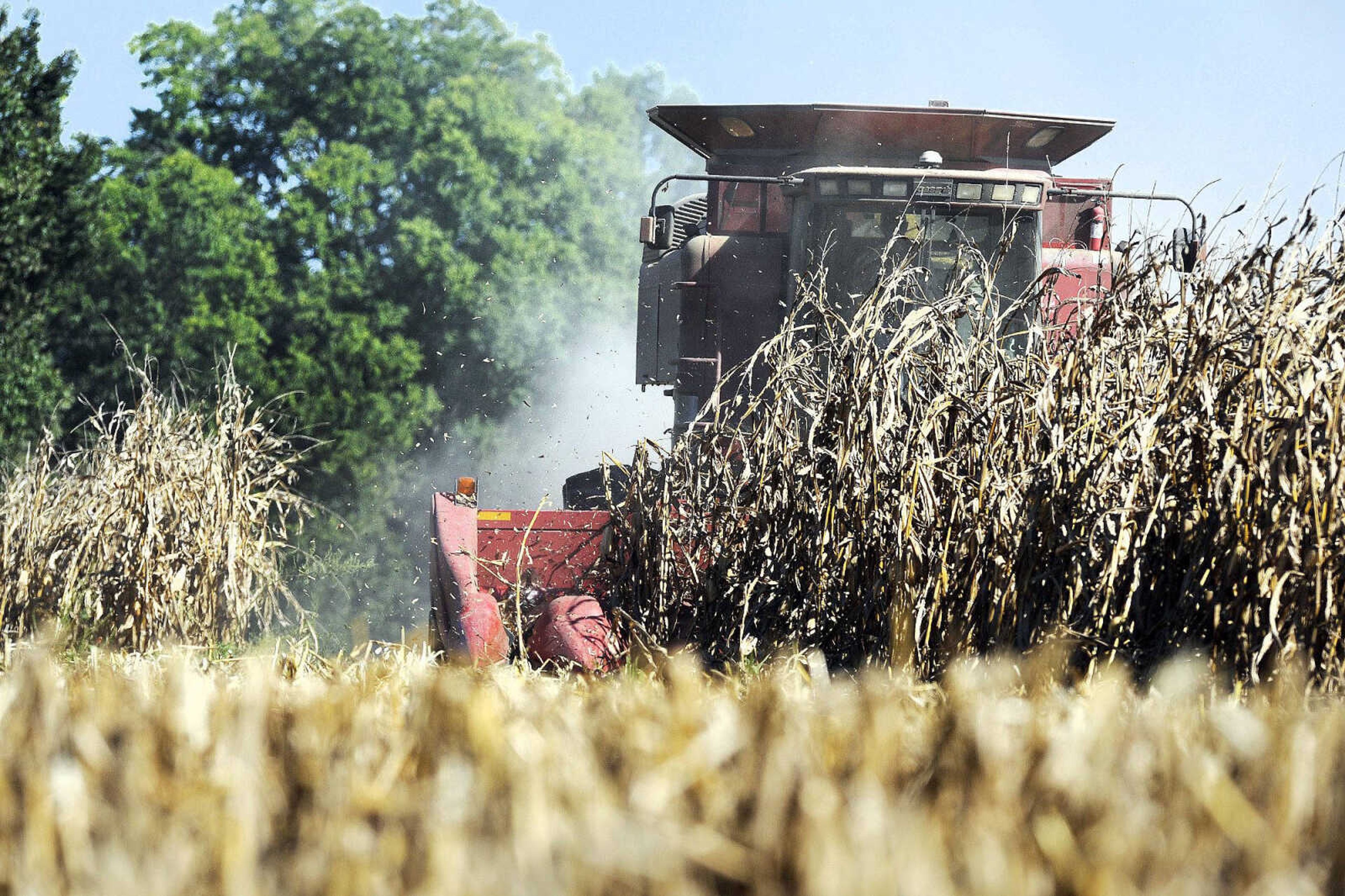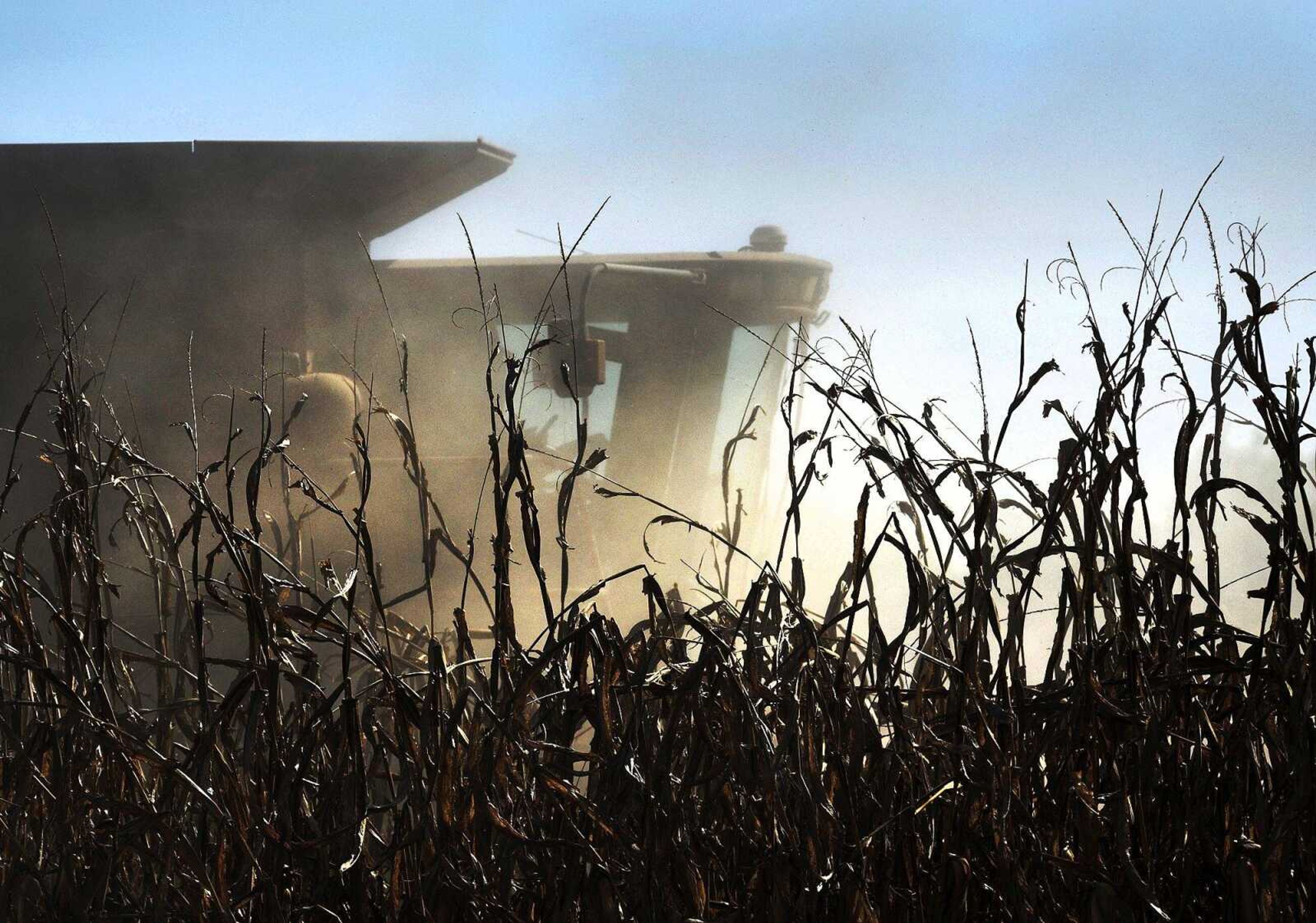Experts: Local corn harvest looks good overall, but prices are down
At his family's farm Wednesday in Gordonville, Tyler Lorberg spent his day in a combine, harvesting what remained of about 85 acres of corn. With his two dogs to keep him company, Lorberg made his final trips down the remaining rows that afternoon, keeping an eye on the quality of the corn as it filled the hopper...
At his family's farm Wednesday in Gordonville, Tyler Lorberg spent his day in a combine, harvesting what remained of about 85 acres of corn.
With his two dogs to keep him company, Lorberg made his final trips down the remaining rows that afternoon, keeping an eye on the quality of the corn as it filled the hopper.
"It's plenty dry, and everything's shelling good, so I can't really complain a whole lot," Lorberg said after transferring the corn to a grain truck.

"The trucks are filling up, and everything's still running."
Anthony Ohmes, an agronomy specialist at the University of Missouri Extension office in the southeast region, said area farmers are on schedule with this year's corn harvest and will be finishing up within the next couple of weeks.
Some acres in the area were affected by floodwaters from the Mississippi River, but overall, producers are pleased with this year's corn yields, he said.
"Flooding was an issue in our flood-prone areas, so that kind of reduced our corn acres for our region," Ohmes said.
But in areas not influenced by flooding, corn was planted on schedule, Ohmes said, and timely rains throughout the summer helped yields.
The state as a whole, however, was a "mixed bag," with corn production in other regions affected by excessive rainfall during the spring, he said.
The southeast region had a wet May, which caused a little stress at first, Ohmes said, but "we warmed right up, dried out, and corn started growing really well."
Ohmes expects to see average yields, with about 175 bushels per acre or more for irrigated land and about 150 for nonirrigated.

"A lot of people want to look back at last year, which was an off-the-chart record year for the state," Ohmes said. "Last year, we had wet conditions super early, and that influenced wheat. Corn production wise, the rain came when wheat was flowering -- bad timing for wheat, because it causes diseases, but it was a good time for corn."
Temperatures also stayed moderate last year, extending the growing season and helping with the grain-fill period.
"All that came together, and it was a perfect combination for corn," he said.
This year brought similar weather, and the region didn't experience extreme swings in temperatures.
"The only thing this year we had, which was unique to this year, was a very general southern corn rust and common corn rust -- two rusts that blow in from the south," Ohmes said, adding rust is a fungal disease that produces spores rusty-orange in color.
"We had a much more general area hit throughout Southeast Missouri. That might've influenced some acres as far as yield potential."
Ohmes added if the rust comes in after the kernel dent stage -- the fifth stage of the grain-fill period, when the kernels are denting near their crowns -- the yield impact is minimal but could cause weakening in cornstalks.
"One producer had some downed corn, and some field-to-field might not be great," he said. "But overall, I think they're pleased."
Market
Although corn producers are seeing average yields, they still face record low prices, said Mike Aide, chairman of Southeast Missouri State University's Department of Agriculture.
"We seem to be at the worst of our latest price slump," Aide said, adding in 2012, he sold corn for $7.22 per bushel.
Prices now are about half that amount, with the U.S. Department of Agriculture reporting the price per bushel in Cape Girardeau County at $3.48 Thursday.
Aide said the drop in prices is attributed partly to a worldwide surplus in corn that occurred in 2012-2013, when 147 million more acres of corn were produced.
"Farmers are tightening up their belts, and it's going to have ramifications on the county and regional economy" he said, adding farmers will postpone equipment and other purchases, negatively affecting businesses in the Midwest.
But Aide said he expects better prices in January.
"The commodity prices are probably at a bottom, and I think they will start trending upward toward next year," he said.
klamb@semissourian.com
(573) 388-3639
Connect with the Southeast Missourian Newsroom:
For corrections to this story or other insights for the editor, click here. To submit a letter to the editor, click here. To learn about the Southeast Missourian’s AI Policy, click here.








